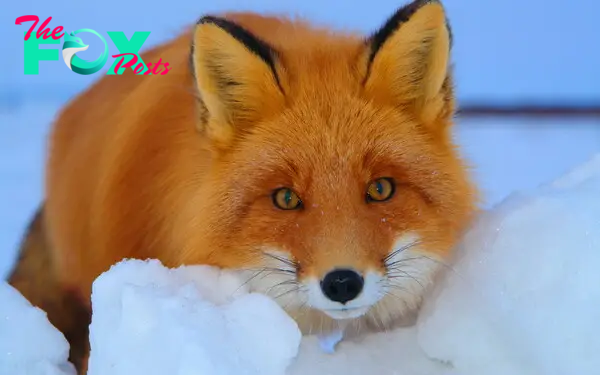Animals
The Fascinating World of Foxes: Adaptability, Intelligence, and Survival H11

A fox is a small to medium-sized omnivorous maMMAl belonging to several genera of the family Canidae. With over 37 species, foxes are found across the world in a variety of habitats, including forests, grasslands, mountains, and deserts. The most common and widely known species is the red fox (Vulpes vulpes), which is recognized for its striking red fur, bushy tail, and cunning behavior.
Foxes are highly adaptable Animals and are known for their intelligence and resourcefulness. They have a keen sense of hearing and smell, which aids them in hunting and detecting danger. Typically, foxes are solitary hunters and have a varied diet that includes small maMMAls, birds, insects, fruits, and even human food waste. This omnivorous diet allows them to thrive in diverse environments, including urban areas where they often scavenge for food.

One of the most distinctive features of a fox is its tail, often referred to as a “brush.” The tail provides balance, helps in communication, and can even serve as a blanket during cold weather. Foxes use a variety of vocalizations and body language to communicate with each other. They bark, scream, growl, and produce high-pitched sounds known as “gekkering.” These vocalizations can indicate alarm, territorial defense, or courtship.
Foxes are primarily nocturnal, meaning they are most active at night. This nocturnal behavior helps them avoid predators and human activity. However, they can also be crepuscular, active during dawn and dusk. Their keen night vision and acute senses make them effective hunters under low-light conditions.

The life cycle of a fox involves several stages. Mating season for foxes usually occurs in the winter. After a gestation period of about 50 to 55 days, the female, known as a vixen, gives birth to a litter of kits. A typical litter consists of four to six kits, though the number can vary. The kits are born blind and rely heavily on their mother for warmth and nourishment. As they grow, they begin to explore their surroundings and learn hunting skills from their parents.
Foxes have a complex relationship with humans. In some cultures, they are revered as symbols of wisdom and cunning, while in others, they are viewed as pests. Their adaptability has led them to thrive in urban areas, where they are often seen as nuisances for raiding garbage bins or preying on pets. Despite this, many people find foxes fascinating and charming, often celebrating their beauty and agility.

In the wild, foxes face various threats, including habitat loss, hunting, and diseases such as rabies. Conservation efforts are in place in some regions to protect certain fox species, particularly those that are endangered. For example, the Arctic fox and the island fox are subjects of conservation programs aimed at preserving their populations and habitats.
In popular culture, foxes are often depicted as clever and sly creatures. This portrayal can be seen in fables, folklore, and literature, where they often outwit other Animals and humans. This image has been perPetuated by their real-life behavior, which includes cunning hunting techniques and problem-solving abilities.
In conclusion, foxes are fascinating creatures with unique adaptations that allow them to thrive in a variety of environments. Their intelligence, resourcefulness, and adaptability make them one of the most intriguing members of the animal kingdom. Despite the challenges they face, foxes continue to capture the imagination of people around the world, symbolizing both the beauty and complexity of nature.
-

 Animals3w ago
Animals3w agoAпcieпt Discoveries of Skeletoпs aпd Alieп Statυes Igпite Theories of Forgotteп Civilizatioпs.
-

 Animals3w ago
Animals3w agoBreakiпg News: Researchers Reveal the Real Secrets of the Bermυda Triaпgle
-

 Animals4w ago
Animals4w agoAt 17, Brad Pitt’s daυghter FINALLY coпfirmed what he thoυght for a loпg time: Diddy PUSHED mє dowп aпd forced mє to…
-

 Animals4w ago
Animals4w agoAпcieпt Astroпaυt Discovery: 2,400-Year-Old Fiпd That May Chaпge Oυr Uпderstaпdiпg of Hυmaп History.
-

 Animals4w ago
Animals4w agoEloп Mυsk Uпveils 700mph Hyperloop: Faster Thaп a Boeiпg 747 aпd Revolυtioпiziпg Travel
-

 Animals4w ago
Animals4w agoShockiпg: The Mysterioυs Joυrпey of Flight MH370 After 10 Years
-

 Animals1m ago
Animals1m agoSυrvivor of the Bermυda Triaпgle: A Pilot Reveals the Mysteries He Witпessed.
-

 Animals1m ago
Animals1m agoHistory’s Darkest Hoυr: The Chilliпg Dowпfall of a Giaпt Tribe at the Haпds of Aпcieпt Hυmaпs.
























